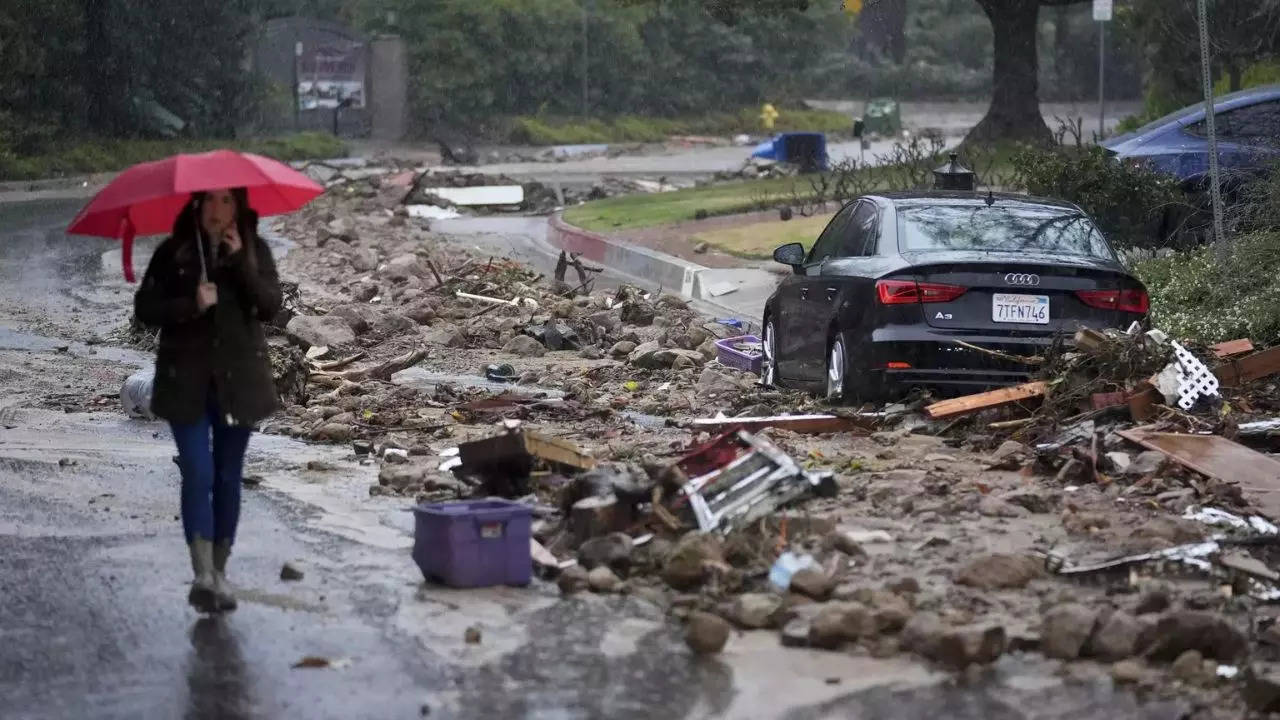Local health authorities have issued warnings to the public to avoid coastal waters, particularly around the Dominguez Channel, where the sewage has been discharged, a Daily Mail report said. Exposure to untreated sewage can cause serious health issues, including Hepatitis A, E Coli infections, and dysentery. Efforts by sanitation workers to manage the sewage have been overwhelmed, with waste flowing through major thoroughfares and into storm drains.
A significant sewage overflow occurred in Rancho Dominguez, about 10 miles north of Long Beach, releasing millions of gallons of waste. According to Bryan Langpap, a spokesperson for the LA County Sanitation District, the system was inundated with an extraordinary volume of rainwater, exceeding the capacity of some sewer pipelines. The following day, additional sewage leaks were reported near downtown Los Angeles, affecting the Dominguez Channel and Compton Creek, prompting health officials to advise against beach visits in the vicinity, the Daily Mail report said.
Annually, around seven million Americans fall ill due to raw sewage exposure, with seven percent of these cases being fatal or severe. The sewage carries a variety of harmful pathogens, including viruses, bacteria, and parasites. Testing is underway near Cabrillo Beach for bacteria that can survive in saltwater for up to three days, posing risks of diarrhea and other health problems. Public health officials have cautioned that contact with water near flowing creeks and storm drains, especially after heavy rainfall, could lead to illness, particularly in vulnerable groups such as children, the elderly, and those with weakened immune systems.
As of Wednesday afternoon, approximately 2.5 million residents of Los Angeles, including those in the Hollywood Hills and Beverly Hills areas, were under a flash flood warning. The storm, driven by consecutive atmospheric rivers, initially hit Northern California before moving southward, causing widespread flooding, landslides, and at least nine fatalities. It has been one of the wettest periods on record for Southern California, with more than a foot of rain reported in some areas. Despite the expected improvement in weather conditions, authorities remain vigilant about the potential for further landslides.
In Los Angeles alone, the storm has led to at least 520 mudslides and the fall of approximately 430 trees, complicating cleanup efforts. Power outages have been significantly reduced, but over 71,000 customers were still without electricity, primarily in the northern and central regions of the state. The public has been urged to avoid downed power lines and areas prone to flooding and mudslides. During the storm, at least 50 motorists were rescued from dangerous conditions. Among the nine storm-related fatalities were individuals struck by falling trees or limbs, a woman who lost her oxygen supply due to a power outage, a drowning near the U.S.-Mexico border, and three deaths in vehicle accidents.
function loadGtagEvents(isGoogleCampaignActive) { if (!isGoogleCampaignActive) { return; } var id = document.getElementById('toi-plus-google-campaign'); if (id) { return; } (function(f, b, e, v, n, t, s) { t = b.createElement(e); t.async = !0; t.defer = !0; t.src = v; t.id = 'toi-plus-google-campaign'; s = b.getElementsByTagName(e)[0]; s.parentNode.insertBefore(t, s); })(f, b, e, 'https://www.googletagmanager.com/gtag/js?id=AW-877820074', n, t, s); };
function loadSurvicateJs(allowedSurvicateSections = []){ const section = window.location.pathname.split('/')[1] const isHomePageAllowed = window.location.pathname === '/' && allowedSurvicateSections.includes('homepage')
if(allowedSurvicateSections.includes(section) || isHomePageAllowed){ (function(w) { var s = document.createElement('script'); s.src="https://survey.survicate.com/workspaces/0be6ae9845d14a7c8ff08a7a00bd9b21/web_surveys.js"; s.async = true; var e = document.getElementsByTagName('script')[0]; e.parentNode.insertBefore(s, e); })(window); }
}
window.TimesApps = window.TimesApps || {}; var TimesApps = window.TimesApps; TimesApps.toiPlusEvents = function(config) { var isConfigAvailable = "toiplus_site_settings" in f && "isFBCampaignActive" in f.toiplus_site_settings && "isGoogleCampaignActive" in f.toiplus_site_settings; var isPrimeUser = window.isPrime; if (isConfigAvailable && !isPrimeUser) { loadGtagEvents(f.toiplus_site_settings.isGoogleCampaignActive); loadFBEvents(f.toiplus_site_settings.isFBCampaignActive); loadSurvicateJs(f.toiplus_site_settings.allowedSurvicateSections); } else { var JarvisUrl="https://jarvis.indiatimes.com/v1/feeds/toi_plus/site_settings/643526e21443833f0c454615?db_env=published"; window.getFromClient(JarvisUrl, function(config){ if (config) { loadGtagEvents(config?.isGoogleCampaignActive); loadFBEvents(config?.isFBCampaignActive); loadSurvicateJs(config?.allowedSurvicateSections); } }) } }; })( window, document, 'script', );



